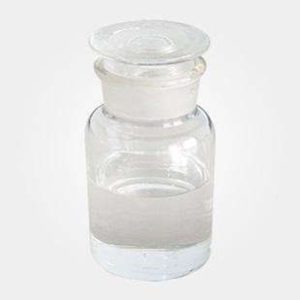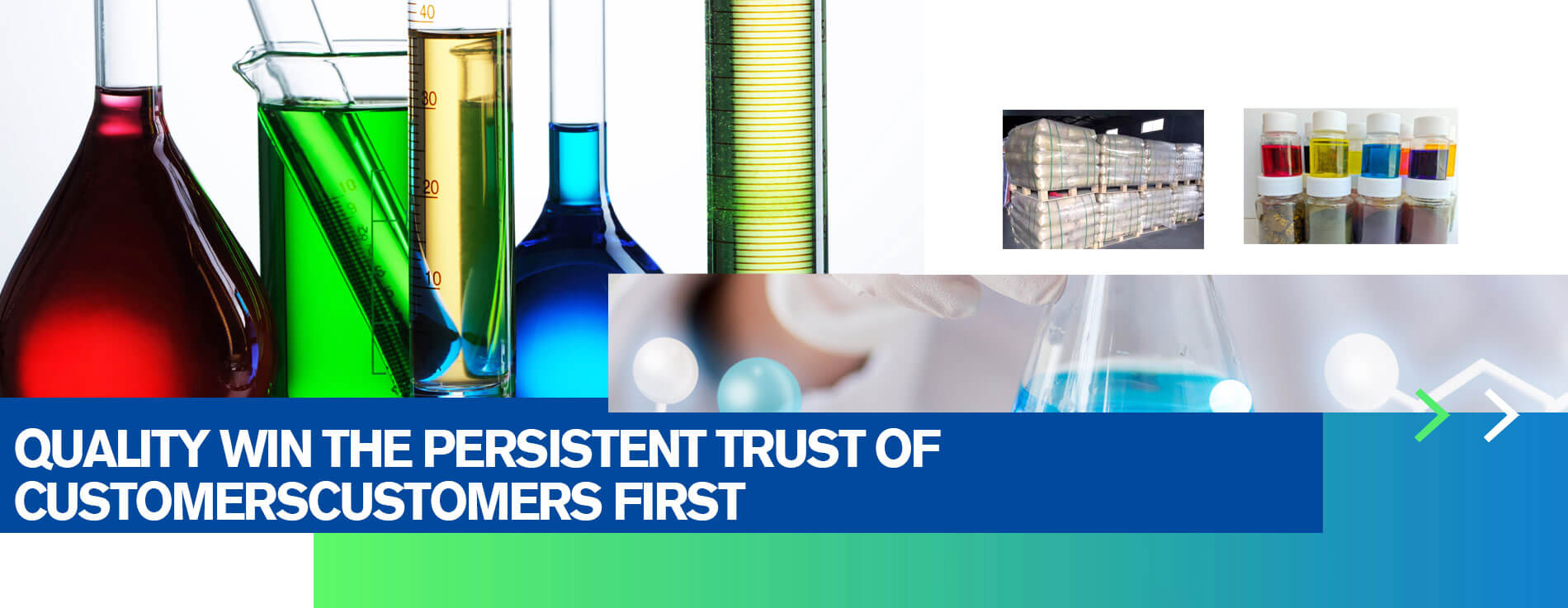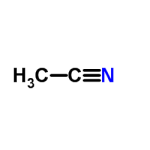Acetonitrile

Specifications
| Quality Items | Quality Index | |||||
| Supperior product | First class product | Quality product | ||||
| Apperance | Colorless and transparent, no suspended matter | Colorless and transparent, no suspended solids, slightly yellowish | ||||
| Chromaticity (Pt-Co) number | 10 | 10 | 20 | |||
| Density (20C), g/cm3 | 0.781~0.784 | |||||
| The boiling range is (O.Under 10133MPa), ℃ | 80.0~82.0 | |||||
| Acidity (in terms of acetic acid)≤: | 00.3 | 0.05 | 0.05 | |||
| Moisture≤ | 0.3 | 0.3 | 0.5 | |||
| Hydrocyanic acid | 0.001 | 0.002 | Agreement between supply and demand | |||
| Ammonia | 0.0006 | 0.0006 | ||||
| Acetone | 0.005 | 0.005 | 0.005 | |||
| Acrylonitrile | 0.01 | 0.03 | 0.05 | |||
| Heavy component (including propionitrile)≤ | 0.1 | 0.5 | report | |||
| Copper | 0.00005 | 0.00005 | ||||
| Iron≤ | 0.00005 | 0.00005 | ||||
| Purity | 99.5 | 99.0 | 98.0 | |||
Packing & Storage
| Packing | It should be packed in a dry and clean special iron drum. The iron drum can only be used after passing the air tightness test. The mouth of the drum is sealed to prevent leakage. Special tank trucks can also be used for shipment | |||||||
| Storage | It should be stored in a special storage tank or in a cool and ventilated warehouse, away from fire and heat sources, and away from direct sunlight. The temperature should not exceed 40C. Equipped with corresponding types and quantities of fire-fighting equipment: Do not contact or store together with oxidants and acids. Do not store together with dangerous goods whose protection and fire extinguishing methods conflict with each other: check regularly for leakage. | |||||||
| Transportation | Acetonitrile is a flammable and toxic substance, and the relevant national regulations should be followed during transportation. | |||||||
Free Quote
At present, the company has more than 10 advanced production lines of the hollow glass microspheres with the annual production capacity of 15 thousand tons. To meet the demand of customers, the company can expand production capacity as soon as possible within 20 days. 6S principles Implemented in the production systems.
For samples, pricing, or more information, please call us at 0086 25 51192301 or mail to info@ascent-chem.com or fill out the following form. We will respond to you as soon as possible.
Tel: 0086 25 51192301
E-mail: info@ascent-chem.com


General Information
| Common Names | Acetonitrile | |||||||
| Structure |  | |||||||
| CAS No. | 75-05-8 | Boiling Point (℃) | 81-82 ºC | |||||
| Molecular Weight | 41.052 | Melting Point (℃) | −45 °C | |||||
| Appearance | Colorless liquid with a pungent odor. | Density | 0.7±0.1 g/cm3 | |||||
| Vapour Pressure | 171.0±0.1 mmHg at 25°C | Flash Point | 2 ºC | |||||
| Water Solubility | It is miscible with water and soluble in most organic solvents such as alcohol. | HS code | 2926909090 | |||||
| Safety Phrases | S16-S36/37-S45-S36/37/39-S27-S26-S36 | ||
| RIDADR | UN 1993 3/PG 3 | ||
| WGK Germany | 2 | ||
| Packaging Group | II | ||
| Hazard Class | 3 | ||
| FIRST AID | |
| Inhalation | Quickly leave the scene to a place with fresh air. Keep the respiratory tract unobstructed. If you have difficulty breathing, give oxygen. If breathing stops, perform artificial respiration immediately. |
| Skin | Take off contaminated clothing and rinse the skin thoroughly with soapy water and clear water. |
| Eyes | Lift the eyelids and rinse with flowing water or saline. Seek medical attention. |
| Ingestion | Drink a sufficient amount of warm water to induce vomiting. Wash the stomach with 1:5000 potassium permanganate or 5% sodium thiosulfate solution. Seek medical attention. |
Acetic acid amination method: Using acetic acid and ammonia as raw materials, under the action of an aluminum trioxide catalyst, at a temperature of 360-420℃, the reaction is carried out to synthesize acetonitrile in one step, and the reaction solution is absorbed by water absorption and distillation to obtain the finished product.Raw material consumption quota: acetic acid (98%) 1763kg/t, liquid ammonia (99.5%) 691kg/t.
![]()
Frequently Asked Questions
The simplest organic nitrile
Acetonitrile is the simplest organic nitrile, usually called cyanide and methyl nitrile. It is a colourless transparent liquid at room temperature, very volatile, has a special odour similar to ether, is flammable, and is accompanied by a bright flame when burned. It is miscible with water, methanol, carbon tetrachloride, methyl acetate, ethyl acetate, dichloroethane and many unsaturated hydrocarbon solvents. Toxic, it can be metabolized into hydrogen cyanide and thiocyanate. Acetonitrile has excellent solvent properties and is an important organic intermediate. And widely used as a polar aprotic solvent. The largest use of acetonitrile is as a solvent, which can be used as a solvent for synthesising vitamin A, cortisone, carboamine drugs and their intermediates, and as an active medium solvent for manufacturing vitamin B1 and amino acids. It can replace chlorinated solvents. It is used in vinyl paints to extract fatty acids, alcohol denaturants, butadiene extractants and solvents for synthetic acrylonitrile fibres. It also has many uses in fabric dyeing, lighting industry, fragrance manufacturing and photosensitive material manufacturing.
Uses of acetonitrile
Acetonitrile, also known as methyl cyanide, is a colorless liquid with a fruity odor. It is widely used in various industries due to its unique properties. Here are some common uses of acetonitrile:
1. Organic Synthesis: Acetonitrile is extensively used as a solvent in organic synthesis reactions. It has a high dielectric constant and good solvency for a wide range of organic compounds, making it suitable for a variety of reactions, including Grignard reactions, nucleophilic substitutions, and oxidations.
2. HPLC and Chromatography: Acetonitrile is a popular solvent in high-performance liquid chromatography (HPLC) and other chromatographic techniques. It is used as a mobile phase component due to its low viscosity, high elution power, and compatibility with a wide range of detectors.
3. Electrochemistry: Acetonitrile is commonly used as a solvent in electrochemical applications, such as cyclic voltammetry and electrodeposition. Its high dielectric constant and low viscosity make it an ideal medium for studying the behavior of electroactive species.
4. Pharmaceutical Industry: Acetonitrile finds extensive use in the pharmaceutical industry. It is used as a solvent for drug synthesis, purification, and formulation. Additionally, it is often employed in the analysis of drug substances and drug products.
5. Chemical Analysis: Acetonitrile is used in various analytical techniques, including spectroscopy (UV-Vis, IR, NMR) and mass spectrometry. It serves as a solvent for sample preparation, as well as a mobile phase component in liquid chromatography-mass spectrometry (LC-MS) methods.
6. Battery Manufacturing: Acetonitrile is used in the production of lithium-ion batteries as a solvent for electrolytes. It helps facilitate ion transport and enhances battery performance.
7. Extraction and Purification: Acetonitrile is employed in extraction processes to separate and purify various compounds. It is particularly useful in the extraction of natural products, such as alkaloids and essential oils.
8. Industrial Cleaning: Acetonitrile’s solvency power and low toxicity make it suitable for industrial cleaning applications. It is used for degreasing, removing oils and greases, and cleaning electronic components.
9. Polymer Industry: Acetonitrile is used in the production of polymers, such as acrylic fibers, acrylic plastics, and rubber chemicals. It aids in polymerization reactions and acts as a solvent or diluent.
It is worth noting that acetonitrile is a toxic substance, and proper precautions should be taken while handling it.
Contact Us
TEL: 0086 25 51192301
EMAIL: info@ascent-chem.com
EMAIL: sophiahoney247@gmail.com
Copyright © Ascent Sbr All Rights Reserved.

